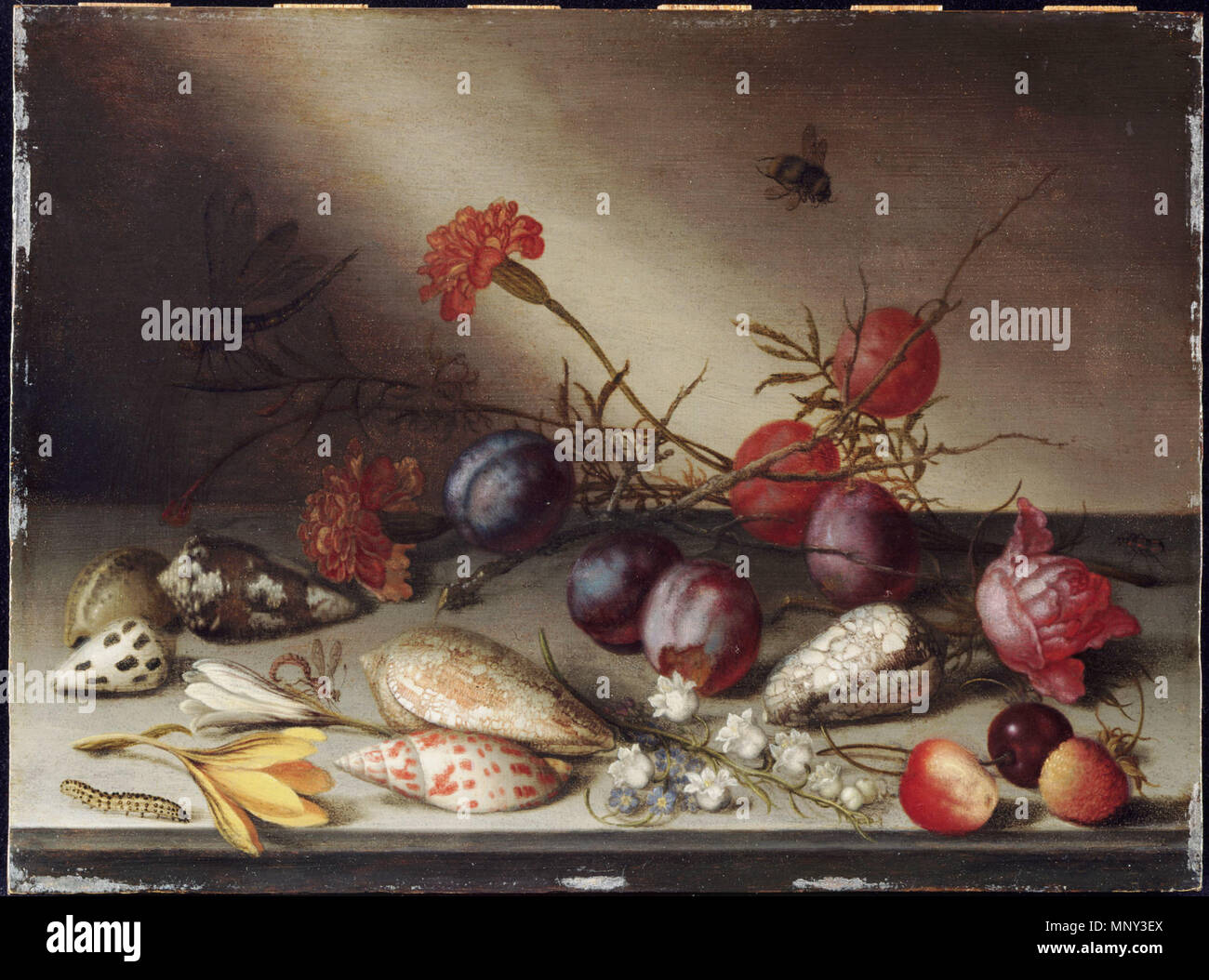English: Still Life: Shells, Carnations, Lily of the valley, Crocii, Rose, Plums, Cherries and Insects on a Ledge . English: Catalogue Entry: In seventeenth-century Europe, Dutch artists were the leading innovators in the new genre of still life, and the practitioners chose specialties. Balthasar van der Ast, who was established in Middelburg and Utrecht before spending the greatest part of his career in Delft, painted combinations of flowers, fruits, and shells, either gathering the flowers in vases or spreading them on tables, as here. He was one of the earliest artists to add insects, like

Image details
Contributor:
The Picture Art Collection / Alamy Stock PhotoImage ID:
MNY3EXFile size:
14.3 MB (750.1 KB Compressed download)Releases:
Model - no | Property - noDo I need a release?Dimensions:
2595 x 1925 px | 22 x 16.3 cm | 8.7 x 6.4 inches | 300dpiMore information:
This image is a public domain image, which means either that copyright has expired in the image or the copyright holder has waived their copyright. Alamy charges you a fee for access to the high resolution copy of the image.
This image could have imperfections as it’s either historical or reportage.
English: Still Life: Shells, Carnations, Lily of the valley, Crocii, Rose, Plums, Cherries and Insects on a Ledge . English: Catalogue Entry: In seventeenth-century Europe, Dutch artists were the leading innovators in the new genre of still life, and the practitioners chose specialties. Balthasar van der Ast, who was established in Middelburg and Utrecht before spending the greatest part of his career in Delft, painted combinations of flowers, fruits, and shells, either gathering the flowers in vases or spreading them on tables, as here. He was one of the earliest artists to add insects, like the worm, bumblebee, and mayfly in this painting. Hidden meanings are common in still life and can range from the cycle of seasons (spring flowers contrasting with summer fruits) to the continents (the exotic shells evoking distant oceans). On a spiritual level, the still life alludes to the vanitas theme since one of the plums has been partially eaten, and an insect’s life is notoriously short. Gallery Label: This painting, which has hidden meanings, reflects the seventeenth-century Dutch practice of collecting and representing exotic flowers and shells. But the flora in decay, the short-lived insects, and the purple plums with red juice symbolizing Christ’s suffering and death introduce a vanitas theme. The pleasing image thus suggests the transience of human life and the eternity of spiritual life. . 1630s-50s. 1221 Van der Ast, Balthasar, Still Life, Shells, Carnations, Lily of the valley, Crocii, Rose, Plums, Cherries and Insests on a Ledge, 1630s-50s